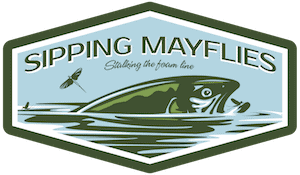DO TROUT EAT FROGS AND TADPOLES?
May 3rd, 2022
Frogs are amphibians of the order anura that are a favorite prey item of many species of fish. Trout will eat frogs and tadpoles when the opportunity arises, but there’s more to the story. Some frogs are toxic and thus entirely avoided.
In the below article, I’ll explain to you which types of frogs are most commonly eaten by trout, whether tadpoles are consumed as often, and I’ll show you pictures of fish that ate frog imitations.
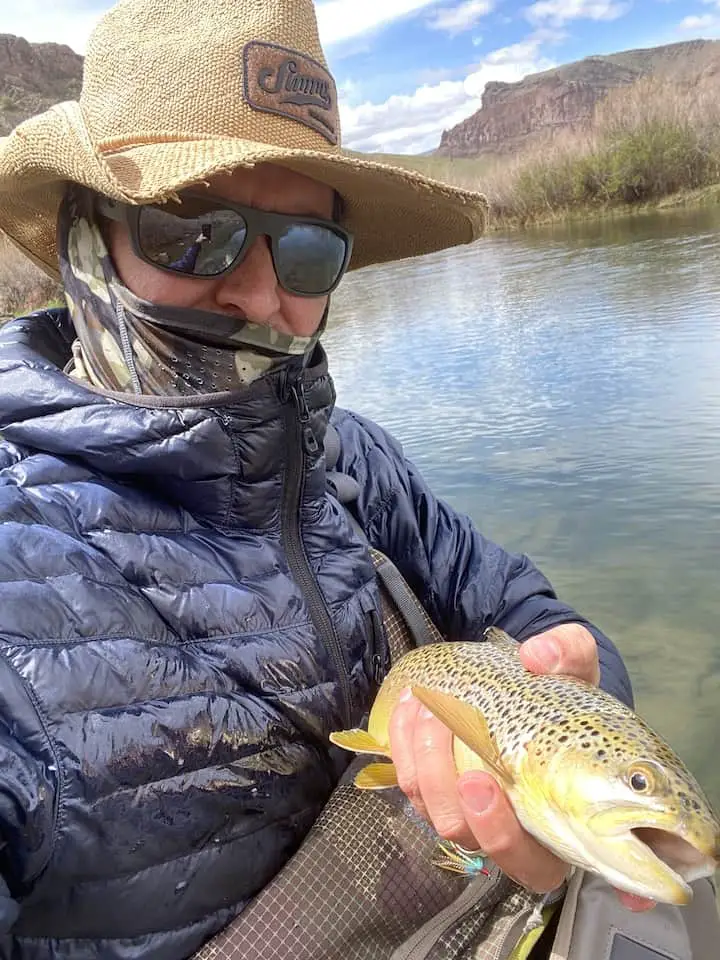
In the above picture I’m holding a brown trout (Salmo trutta), a species that will eat frogs readily.
Do Trout Eat Frogs?
Yes, trout eat frogs quite often, mostly during the spring and summer seasons when frogs are spawning and laying eggs in water. This generally occurs in ponds, lakes, and slow-moving rivers.
Toads spend most of their time on land (terrestrial), only entering the water to reproduce.
First and foremost, trout are opportunistic hunters. They’ll eat anything they can overpower, including amphibians. Trout never consume plant material at any stage of their life–they only consume animal matter. Simply put, they’re 100% carnivores.
Frogs spawn and lay eggs in the spring. Their eggs usually float in oblong masses.
As a kid, I remember finding a collection of frog eggs as large as a basketball while my dad and I were fishing in the bay of a lake. It was was of the strangest things I’ve ever encountered, almost like an alien lifeform.
Toads lay eggs in very long strings. That’s how you can tell the difference.
In the United States, two of the most commonly eaten (by fish) species of frog are Bullfrogs (Lithobates catesbeianus) and Leopard frogs (Rana pipiens). In the UK, it’s the Common frog (Rana temporaria). These are all terrestrial frogs, but they’re always near water.
Bullfrogs almost always squeak when they jump from the shoreline into the water. That’s how you can identify them.
Trout, including rainbow, brown, brook, and bull, have recurved canine teeth. These sharp teeth are used to subdue, drown, and swallow any animal they can find, including amphibians, rodents, fish, and large insects.
Of all the trout species, the one most likely to eat an adult frog is the brown trout.
Here’s a picture I took where you can see the trout’s sharp teeth. Notice that it even has teeth on its tongue.
I wrote an article all about trout teeth (including a lot of interesting pictures) if you’re interested.
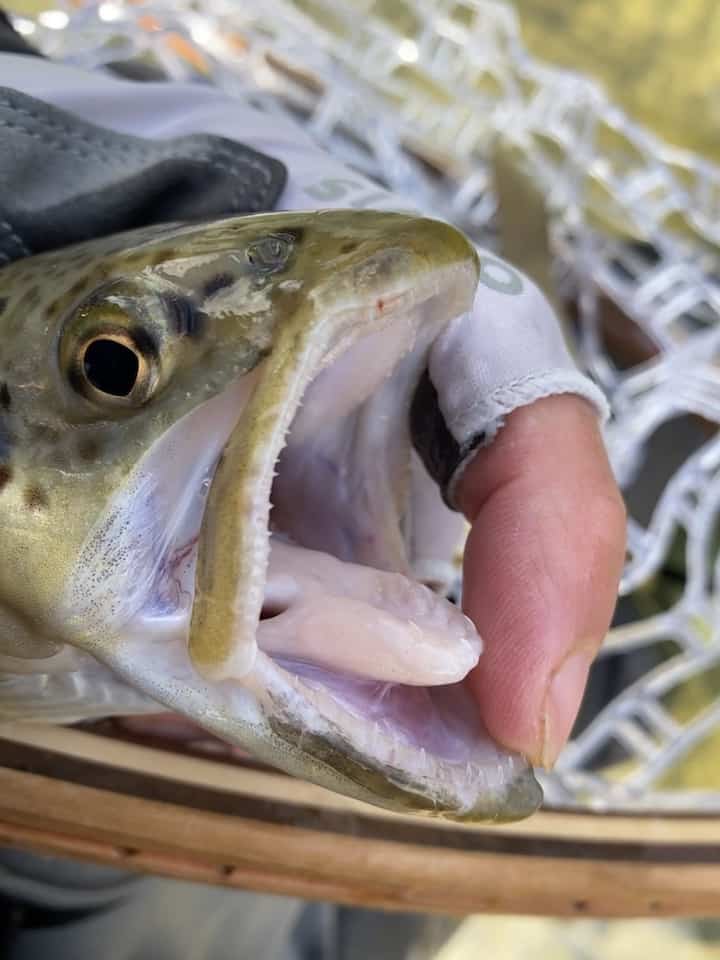
Do Trout Eat Tadpoles?
Yes, trout will eat tadpoles when the amphibians hatch from eggs in late spring. Tadpoles will remain in the water for a period of 1-3 months before they sprout their back legs, followed shortly thereafter by their front legs. They’re never safe in the water, often becoming protein-packed meals for big trout and other carnivorous fish like largemouth bass.
Tadpoles almost always hang out near the shoreline, preferably in rocky or weedy areas for protection. But, trout know this and often hunt along the shallows in search of prey. They’re just as likely to catch and swallow a frog as they are a mouse.
In cold water, tadpoles develop much less quickly. For instance, a tadpole that hatches in a warm shallow pond is going to metamorphosize several weeks faster than a tadpole that hatches in a cool river.
Once when I was fishing a medium-sized river, I saw tadpoles of all sizes along the shoreline, hiding among the rocks. There were also adults, which I took of picture of (see below).
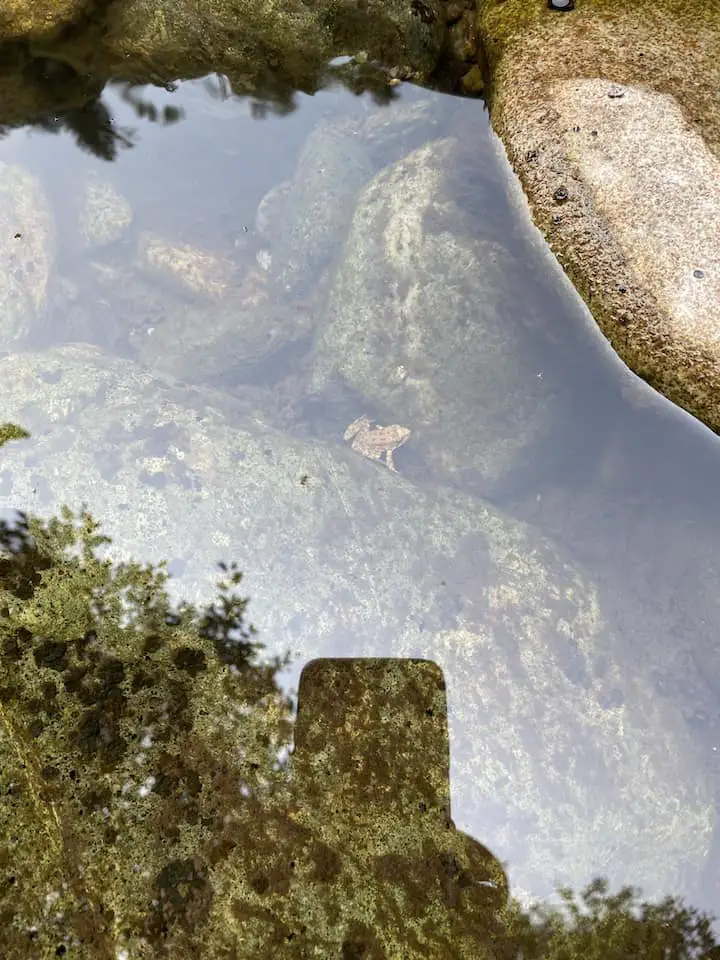
Can You Use Frogs as Bait for fishing?
Yes, you can use frogs as live bait for fishing, but make sure you check with your state’s wildlife regulations ahead of time to make sure you’re not harvesting a protected species. Avoid tree frogs and any frogs that have bright coloration as this can convey to the fish that it may be toxic.
While it’s not something I currently practice, anglers have been using frogs as bait for decades. But, there are plenty of frog imitation lures and fly patterns available.
I’ve done plenty of pond fishing and I can tell you from experience that I have much better success with the lures, specifically this one, which has landed me some big largemouth bass. Cast it out and as you start retrieving, do a quick 6-inch jerk, then stop. Then do another 6-inch jerk, then stop, and so on. The legs splay out-and-in very naturally. Super effective.
Summary
Frogs, and similar amphibians like salamanders, are a favorite food of many trout, largemouth bass, and northern pike. You may want to check out an article I wrote entitled, “Do Trout Eat Salamanders?“
If you’re taking the live bait route, instead of artificial lures, concentrate your efforts during the spring and summer, when frogs and tadpoles are most active in the water.
During the fall and winter, the water temperature drops and amphibians slow way down. So, fish aren’t as acclimated to eating them during these seasons.
Casting in deep water is a waste of your time. Just focus on shallow water near the shorline, where the frogs hang out.
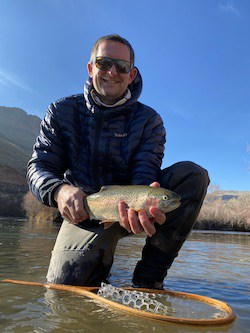
About the Author
My name's Sam and I'm a fly fishing enthusiast just like you. I get out onto the water 80+ times each year, whether it's blazing hot or snow is falling. I enjoy chasing everything from brown trout to snook, and exploring new waters is something I savor. My goal is to discover something new each time I hit the water. Along those lines, I record everything I learn in my fly fishing journal so I can share it with you.
Follow me on Instagram , YouTube, and Facebook to see pictures and videos of my catches and other fishing adventures!
